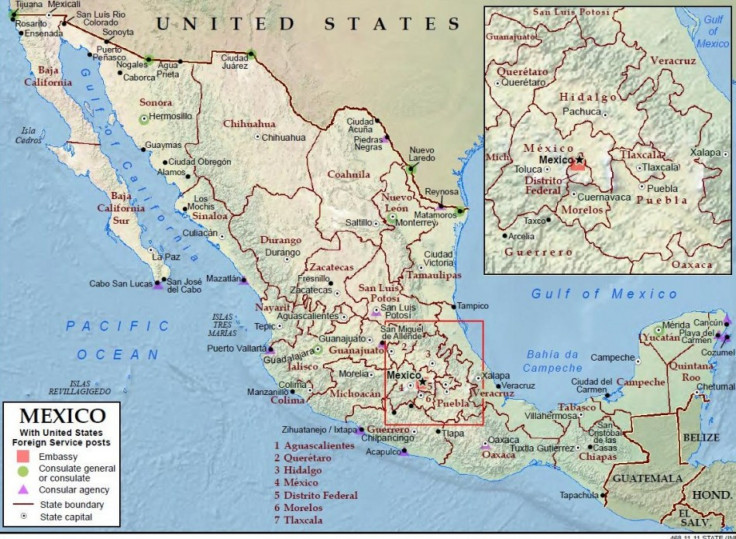Mexico Travel Warning 2012: U.S. Pinpoints Areas to Avoid

The U.S. State Department issued a new 2012 state-by-state travel warning and map for visitors to Mexico that details areas of violence but also points out areas like Mexico City and Riviera Maya where travel advisories are not in effect.
The travel warning, announced Wednesday, is broader, more detailed, and more alarming than previous versions, giving specific cities and states where gun battles and drug trafficking violence are likely to occur.
The state department notes that millions of U.S. citizens safely visit Mexico each year for study, tourism, and business, including more than 150,000 who cross the border every day.
The Mexican government makes a considerable effort to protect U.S. citizens and other visitors to major tourist destinations, and there is no evidence that Transnational Criminal Organizations (TCOs) have targeted U.S. visitors and residents based on their nationality, the department said. Nevertheless, U.S. travelers should be aware that the Mexican government has been engaged in an extensive effort to counter TCOs which engage in narcotics trafficking and other unlawful activities throughout Mexico. As a result, crime and violence are serious problems throughout the country and can occur anywhere.
The department said that U.S. citizens have fallen victim to homicides, gun battles, kidnapping, carjacking, and highway robbery. The number of U.S. citizens reported to the Department of State as murdered in Mexico increased from 35 in 2007 to 120 in 2011.
According to the most recent homicide figures published by the Mexican government, 47,515 people were killed in narcotics-related violence in Mexico between Dec. 1, 2006 and Sept. 30, 2011, with 12,903 narcotics-related homicides in the first nine months of 2011 alone.
Gun battles have occurred in broad daylight on streets and in other public venues, such as restaurants and clubs. During some of these incidents, U.S. citizens have been trapped and temporarily prevented from leaving the area, the travel advisory said.
The warning became public as Mexican troops announced Thursday that they had seized 15 tons of pure methamphetamine outside Guadalajara - an amount on par with half of all meth seizures worldwide in 2009.
The State Department adds, however, that resort areas and tourist destinations in Mexico generally do not see the levels of drug-related violence and crime reported in the border region and areas along major trafficking routes.
There are no advisories for popular destinations like Cabo San Lucas, Cancun, Cozumel, Riviera Maya, Chichen Itza, and Mexico City.
Americans are urged to exercise caution in other popular areas like cruise ship port Mazatlan, Tijuana, and Monterrey.
Among recent atrocities was a fire organized by masked gunmen in August in a casino in Monterrey, Mexico's industrial capital in Nuevo Leon. The blaze killed 52 people, mostly women.
Mazatlan, meanwhile, is located in the state of Sinaloa where one of Mexico's most powerful TCOs is based. In the last year, Mazatlan has experienced a dramatic increase in violence with incidents occurring more frequently in tourist areas.
Tijuana is a perennial on the State Department's travel warning list. The city's murder rate was a staggering 20 per 100,000 in 2011 with 34 U.S. citizens murdered, according to the Government of Mexico.
Travel warnings are created based on internal guidance that embassies and consular offices use to decide where is safe for U.S. diplomats and federal employees to travel. They typically err on the side of caution.
Nevertheless, the State Department recommends that visitors defer travel to the areas indicated in the Travel Warning, tone down any displays of wealth, and exercise extreme caution when traveling throughout the northern border region.
For full details, view the State Department's Travel Warning here.
© Copyright IBTimes 2024. All rights reserved.






















